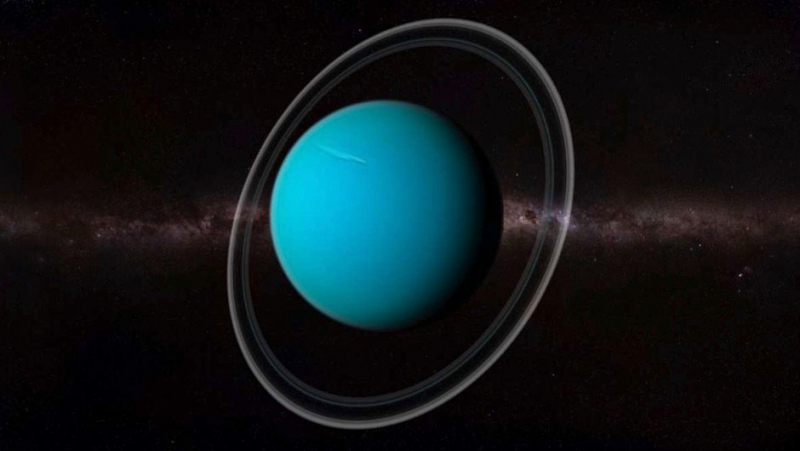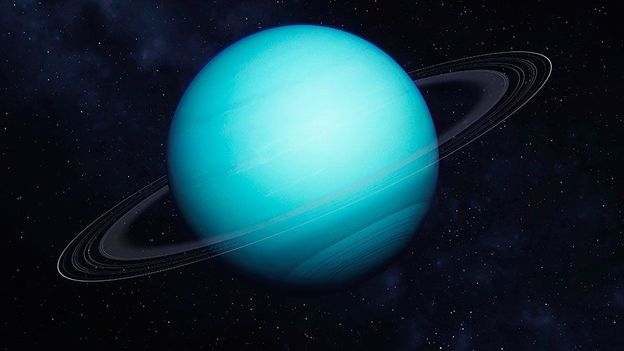Uranus Orbits The Sun On Its Side

In the Solar System, every planet rotates on its axis with a tilt like that of the Sun. Many planets have an axial tilt, which causes one of their poles to be slightly tilted toward the Sun. For instance, the Earth's rotational axis is inclined 23.5 degrees away from the plane of the Sun. Mars and Earth both experience seasonal shifts because of their identical 24-degree tilts.
But Uranus' axial tilt is a startling 99 degrees! To put it another way, Uranus is tilted so much more than the other planets in the solar system that it effectively revolves around the sun on its side, with its spin axis almost pointing at the star. This peculiar orientation could be the result of a collision with a planet-sized body or numerous smaller bodies not long after it was formed. According to a 2018 study, the worlds that collided may have been twice as big as Earth.
Extreme seasons are created by this peculiar tilt and continue for around 20 years. This implies that the sun shines directly over each pole for about a quarter of the Uranian year, which is equivalent to 84 Earth years, leaving the other half of the planet to endure a protracted, dark, and icy winter.








